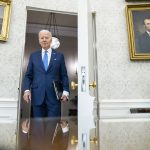In a whirlwind of recent media appearances, Vice President Kamala Harris has seemingly decided to step into the spotlight, but not without raising a few eyebrows along the way. Traditionally quieter in her media engagements, Harris has suddenly been popping up everywhere from the popular daytime talk show The View to the candid and often provocative Howard Stern Show. It’s almost as if someone handed her a memo instructing her to shake things up, and she took it to heart, jumping headfirst into the media pool.
Her appearances have sparked a flurry of discussions, particularly among modern media watchers who are scratching their heads about the Vice President’s choice of platforms. It’s not every day that a candidate, particularly one so close to the presidency, opts for a radio show known for its frank discussions. Meanwhile, serious questions regarding the safety of politicians—especially in the context of political polarization—seem to be overshadowed by the choice of guest shows and flashy interviews.
In the realm of serious matters, the question of safety came under scrutiny when Howard Stern asked Harris if she would feel secure remaining in America should Trump win the upcoming election. It’s an eyebrow-raising question, especially considering the heightened political tensions and concerns about security threats facing public figures. For instance, even former President Trump has faced multiple threats during his time in office, making this question particularly relevant. However, Harris navigated the conversation without delving too deeply into this issue.
Moreover, there seems to be a disconnect between the Vice President’s concerns regarding safety and the real fears of voters on the ground. Many Americans face daily struggles with rising violence and a growing sense of insecurity in their neighborhoods. Headlines continue to highlight alarming crime trends, yet the media focus often shifts towards celebrity-style appearances rather than tackling these pressing community concerns. For voters, the juxtaposition of Harris’s televised appearances against the backdrop of their troubled communities creates a curious—if not frustrating—dissonance.
Adding to the intrigue, some panelists have noted the light treatment Harris received from her interviewers, suggesting that many media outlets were reluctant to ask the harder-hitting questions. Instead of delving into policies or more pressing issues, the interviews leaned heavily toward a friendly, conversational style, which some see as a missed opportunity for meaningful debate.
As the political landscape shifts and the race for the presidency heats up, one thing is certain: media strategies and candidate visibility are crucial for maintaining a connection with the electorate. Whether Harris’s newfound willingness to be front and center will resonate positively with voters or simply be seen as a tactical move in a trailing campaign remains to be seen. What is becoming increasingly clear is that candidates in this race may need to refocus their strategies—and their platforms—on the issues that matter most to American families, rather than engaging in talk show appearances.




